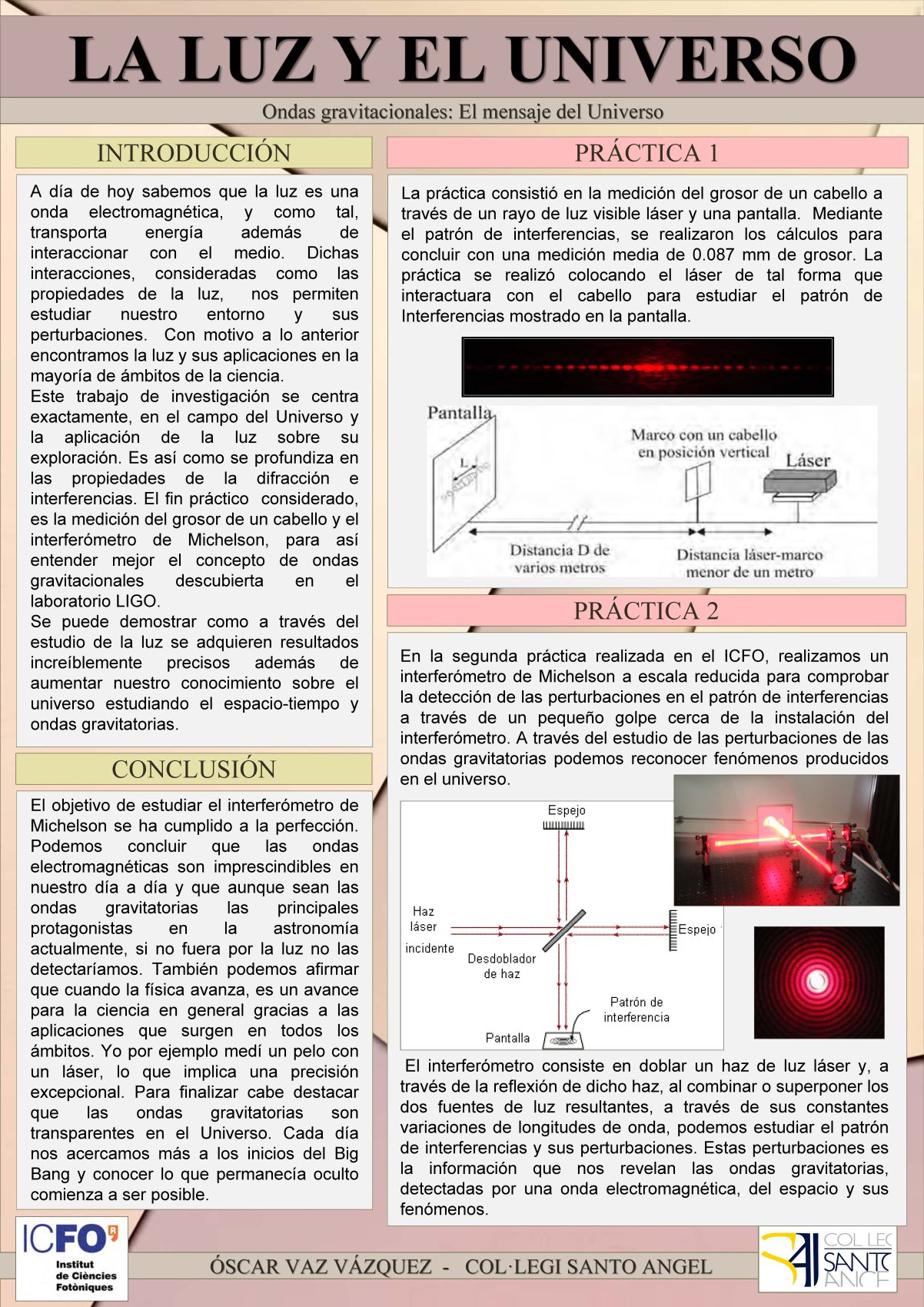La luz y el universo
Óscar Vaz Vázquez
Col·Legi Santo Angel – Gavà
We have realized that the study of light brings progress to science. Since we started wondering about it, we have always tried to understand what light is. Today we know that light propagates as an electromagnetic wave that travels in a straight line at the speed of light and interacts with the matter. The knowledge of these interactions can be subsequently applied to analyse other system with a high degree of accuracy. A clear example along this line is the measurement of the thickness of a hair through the interaction of it with a beam of light. By studying the diffraction pattern created after the interaction, we can study the physical properties of hair. Focusing on the properties of diffraction and interference through electromagnetic waves, we can extend the previous concepts to detect gravitational waves. This is achieved by the superposition of two light beams and the variation in the interference pattern due to perturbations of the wavelengths. In this way, the detection of gravitational waves in 2015 has become one of the greatest experimental achievements of the era of modern physics and astronomy. At the ICFO photonics research centre in Castelldefels, and after a small-scale replication of the Michelson interferometer, we can understand how the detection of the collision of two black holes occurred with the study of variations in the interference pattern. Thus, it could be observed that if we varied the wavelength of one of the light beams, its interference pattern was disturbed. These kind of techniques, with its unprecedented accuracy, opens the gate to leading research centres like LIGO to explore new areas of science where the human knowledge is pushed to its limits.


